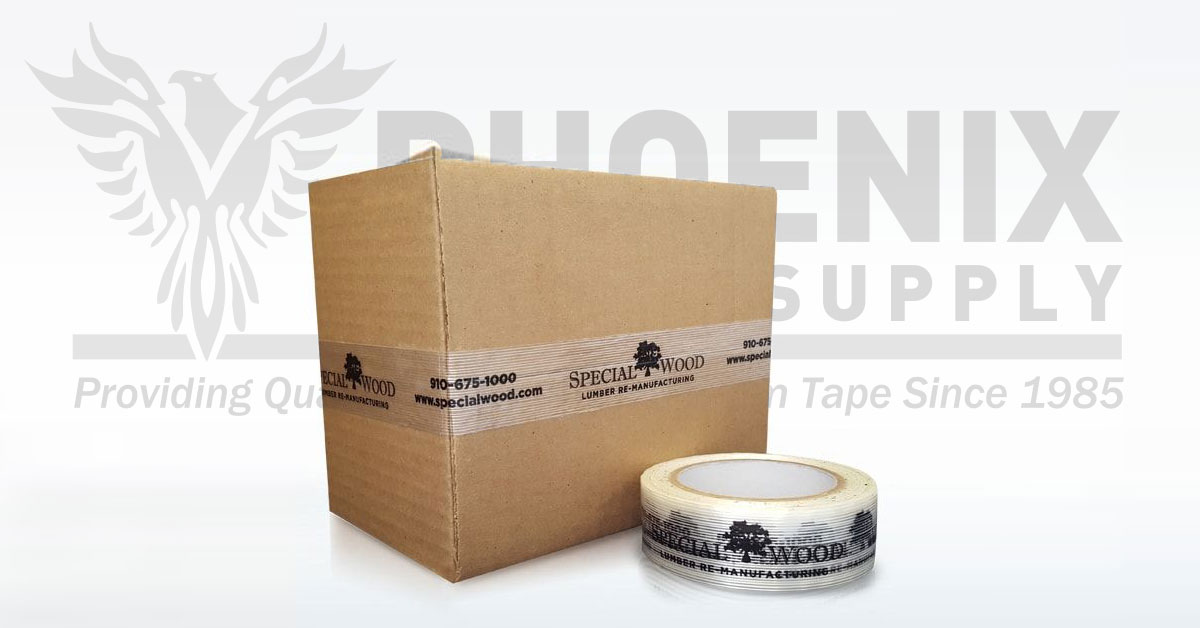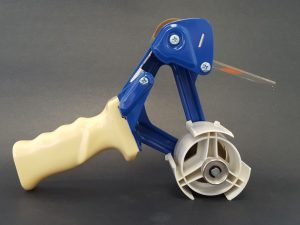What is Filament Tape?

Filament tape is a utility-grade packing tape designed for heavy-duty strapping applications. It’s named after the embedded fiberglass ‘filaments’ that add strength and integrity. Filament tape is considered a pressure-sensitive adhesive (PSA) tape marked by its sticky, or tacky, backing that adheres to a surface with light pressure, as opposed to a heat-sensitive or water-activated tape that requires heat or water for activation.
In this article, we’re taking a deep dive into the fundamentals of filament tape, starting with a brief history and finishing with the best ways to maximize its utility and boost your brand exposure.
A brief history of filament tape
The complete history of filament tape is not well documented, but we have a few clues about its origins. It all started in 1846 when a surgeon named Dr. Horace Day first developed PSA tapes. While several advancements to the form and function of adhesives surfaced after this discovery, including two milestones by German inventors, filament tape didn’t emerge until a century after Dr. Day’s initial breakthrough.
Experts believe that a Johnson and Johnson scientist named Cyrus W. Bemmels invented filament tape in 1946, presumably to provide a utility-grade PSA solution for heavy-duty applications. Today, filament tape is a thriving packaging tape for specialty applications that depend on durability and strength.
How is filament tape different than traditional packing tape?
Thanks to the embedded fiberglass filaments, filament tape is not your run-of-the-mill adhesive packing tape. It’s much stronger and forms a longer-lasting bond. When you think of filament tape, the following are a few features and benefits to keep in mind:
- Utility grade for heavy-duty applications
- High tensile strength
- Stronger than traditional adhesive tapes
- Split- and crack-resistant backing for integrity
- Synthetic rubber adhesive for a long-lasting bond
- Resists moisture and solvents
While traditional and more commonly used packing tapes like polypropylene and PVC have their place, filament tape is the leading choice when you need long-lasting and heavy-duty durability.
What are the best uses for filament tape?

Filament tape is most often used to close corrugated boxes, but heavy-duty applications are where it truly shines. Heavy load? Weak box construction? Filament tape is the wisest choice. The inherent high tensile strength is especially useful for:
To apply filament tape, you will need a handheld dispenser specifically for strapping or filament tape. The dispenser will be fit with a blade meant to slice the filaments in the tape.
Is custom printed filament tape worth it?
In this article so far, we’ve highlighted the practical advantages of heavy-duty filament tape. Still, there’s more to the story if you want to fully leverage the power of this tape. When custom printed with your company’s logo or design, filament tape expands beyond its utilitarian value to provide a host of other benefits.
As we covered in our article on using custom packing tape to create an unforgettable unboxing experience, all types of printed tape can make significant strides in advancing your branding and marketing campaigns by:
- Enhancing brand exposure and awareness
- Increasing customer loyalty
- Earning a competitive edge
- Landing more business
And because custom printed filament tape can help secure the heaviest of shipments, it becomes both a useful and cost-effective packaging solution as well as a savvy marketing tool.
Filament tape is just one of the many types of top-selling custom packaging tapes you can order from us. We’re also your affordable source for custom printed polypropylene, PVC, paper, flat back, and hi-tack freezer tapes that help tell your brand story. Which packaging solution will you choose? Reach out to our sales and design professionals for help selecting and designing custom printed tape you’ll be proud to show off.

 1-800-992-1522
1-800-992-1522  My Account
My Account 
 Register / Login
Register / Login 